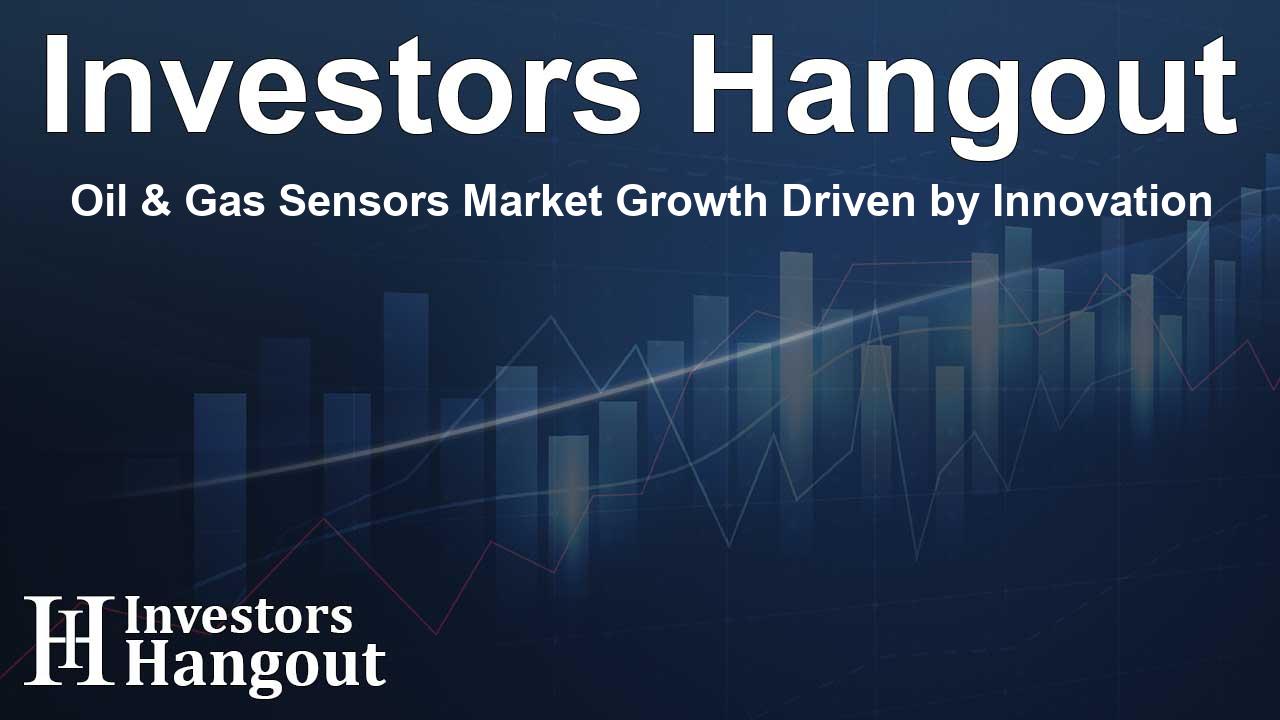Oil & Gas Sensors Market Growth Driven by Innovation

Market Overview of Oil & Gas Sensors
The Oil & Gas Sensors Market is witnessing unparalleled growth fueled by the expansion of the oil and gas industry worldwide. A recent report highlights that this market, valued at $6.8 billion, is projected to reach $10.5 billion in the coming years. This upward trend is propelled primarily by the increasing demand for advanced sensors, particularly ultrasonic sensors, which are becoming crucial for efficient operations.
Factors Driving Market Growth
Several factors contribute to the robust expansion of the Oil & Gas Sensors Market. One of the primary drivers is the significant investment in capacity expansion of offshore projects. As companies ramp up exploration and production activities, the need for efficient monitoring and automation tools, such as sensors, becomes paramount. The integration of cutting-edge technologies like 5G into sensor systems has further enhanced their functionality and reliability.
Investment Trends in Exploration
Investment in oil and gas exploration is on the rise. Recent reports indicate that a number of companies have allocated substantial capital for this purpose, with some investing over $10 million. This includes major players that contribute greatly to the sector's growth. The increased financial commitment enables these companies to adopt technologically advanced oil and gas sensors, thereby enhancing operational efficiencies.
Technological Advances and Market Demand
The global demand for oil has surged, with the U.S. reaching record crude oil production levels. Enhanced production capabilities create a pressing need for reliable technologies that ensure safety and efficiency. The adoption of ultrasonic sensors has risen, as these devices are capable of monitoring various conditions in complex environments, thereby improving operational reliability and efficiency.
Main Applications of Oil & Gas Sensors
The applications of oil and gas sensors span across upstream, midstream, and downstream processes. Each segment requires different types of sensors to monitor pressure, temperature, flow, and levels due to the unique challenges each phase presents. For instance, ultrasonic flow sensors play a critical role in measuring the flow of liquids in pipelines and storage systems.
Geographical Trends in Sensor Usage
In recent analysis, the North American continent has emerged as a dominant player in the Oil & Gas Sensors Market, followed closely by Europe and Asia Pacific. The demand in these regions aligns with their robust oil and gas industries and ongoing projects focused on enhancing energy efficiency and safety protocols.
Competitive Landscape
The market features several key players including Honeywell International Inc, TE Connectivity Ltd, and Robert Bosch GmbH. These companies are not only leaders in technological advancements but also compete intensely in terms of product offerings and market strategies. Their commitment to innovation, including new product launches and acquisitions, ensures they remain at the forefront of the market.
Recent Innovations in the Market
Recent developments highlight a trend toward integrated sensor technologies. Companies are increasingly focusing on solutions that can combine multiple functionalities into single devices. For instance, sensors capable of monitoring temperature and humidity alongside other critical environmental parameters are gaining traction.
Future Outlook
As the global oil and gas industry continues to evolve, the demand for oil and gas sensors will only increase. The implementation of advanced technology, coupled with ongoing investments in the sector, predicts a promising future for the Oil & Gas Sensors Market. Companies focusing on innovation and adaptation to new technologies are poised to capitalize on this growth, ensuring operational efficiency while addressing safety concerns.
Frequently Asked Questions
What is driving the growth of the Oil & Gas Sensors Market?
The market is propelled by increased investment in oil and gas exploration, the integration of advanced technologies like 5G, and a rising demand for reliable monitoring solutions.
Which regions dominate the Oil & Gas Sensors Market?
North America leads the market, followed by Europe and Asia Pacific, with significant activity and investment in these regions.
What types of sensors are most commonly used?
Commonly used sensors include pressure sensors, temperature sensors, flow sensors, and level sensors, each tailored to specific applications across the oil and gas sector.
How does technological innovation impact the market?
Technological advances, such as the integration of AI and IoT, enhance the functionality of sensors, boosting safety, efficiency, and operational reliability in the industry.
What is the expected market size for Oil & Gas Sensors?
The Oil & Gas Sensors Market is projected to grow to approximately $10.5 billion by 2031, reflecting a significant opportunity for industry participants.
About Investors Hangout
Investors Hangout is a leading online stock forum for financial discussion and learning, offering a wide range of free tools and resources. It draws in traders of all levels, who exchange market knowledge, investigate trading tactics, and keep an eye on industry developments in real time. Featuring financial articles, stock message boards, quotes, charts, company profiles, and live news updates. Through cooperative learning and a wealth of informational resources, it helps users from novices creating their first portfolios to experts honing their techniques. Join Investors Hangout today: https://investorshangout.com/
Disclaimer: The content of this article is solely for general informational purposes only; it does not represent legal, financial, or investment advice. Investors Hangout does not offer financial advice; the author is not a licensed financial advisor. Consult a qualified advisor before making any financial or investment decisions based on this article. The author's interpretation of publicly available data shapes the opinions presented here; as a result, they should not be taken as advice to purchase, sell, or hold any securities mentioned or any other investments. The author does not guarantee the accuracy, completeness, or timeliness of any material, providing it "as is." Information and market conditions may change; past performance is not indicative of future outcomes. If any of the material offered here is inaccurate, please contact us for corrections.